Table of Contents
Picture this: you walk into your favorite coffee shop, and before you even see the gleaming espresso machine, that rich, intoxicating aroma hits you. Your mouth starts watering, your senses awaken, and suddenly you’re craving that perfect shot. That’s the power of espresso aroma—it’s not just a pleasant prelude to your morning ritual, it’s actually shaping how your espresso will taste before you take your first sip.
As someone who’s spent countless mornings perfecting shots at home, I’ve learned that understanding espresso aroma isn’t just coffee geek territory—it’s the secret to brewing café-quality espresso in your own kitchen. The science behind smell and taste is fascinating, and once you grasp how they work together, you’ll never approach your espresso routine the same way again.
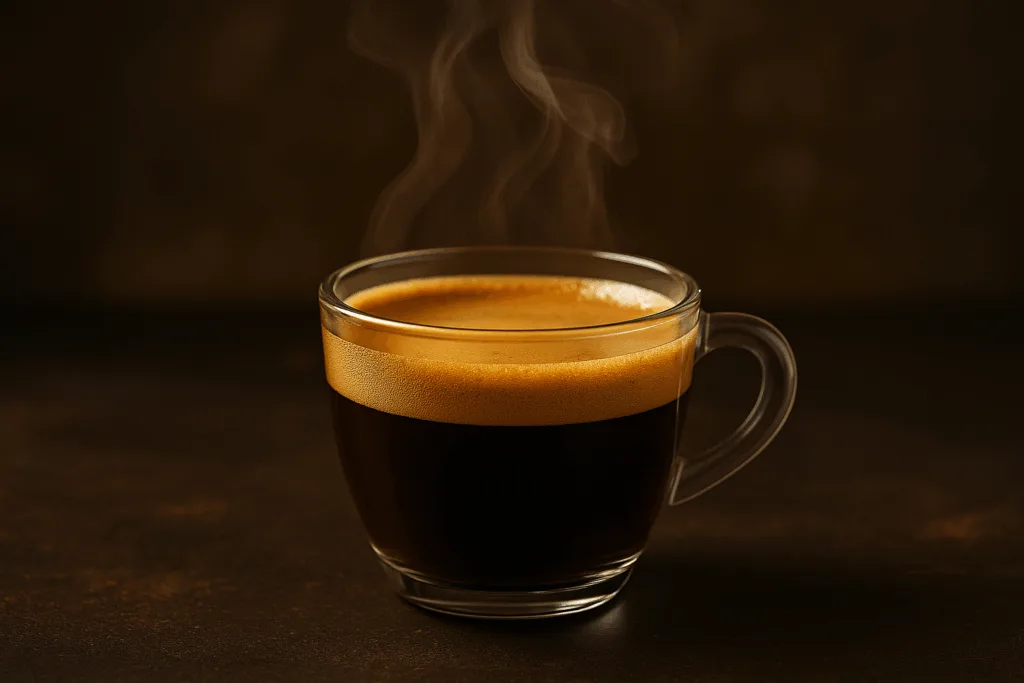
Key Takeaways
- Aroma drives 80% of what we perceive as taste—your nose is doing most of the heavy lifting when you sip espresso
- Fresh grinding releases volatile compounds that create the complex aromas we associate with quality espresso
- Crema acts as an aroma trap, preserving and concentrating the fragrant oils that make espresso smell incredible
- Different brewing variables (grind size, water temperature, extraction time) dramatically impact aroma development
- Proper storage and handling of beans preserves the aromatic compounds that make or break your espresso experience
The Science Behind Espresso Aroma: More Than Just Smell
When we talk about espresso aroma, we’re really diving into some pretty incredible science. Your sense of smell is directly connected to your brain’s limbic system—the same area that processes emotions and memories. That’s why a single whiff of quality espresso can instantly transport you to that perfect café in Italy or remind you of lazy Sunday mornings.
How Volatile Compounds Create Magic ✨
Coffee contains over 800 volatile compounds—these are the molecules light enough to float through the air and hit your olfactory receptors. When you grind fresh beans, you’re literally releasing these aromatic treasures into the air. The moment hot water hits your coffee grounds during extraction, even more compounds are released, creating that complex bouquet we coffee lovers can’t resist.
Here’s what’s happening on a molecular level:
- Aldehydes create nutty, fruity notes
- Ketones contribute to buttery, creamy aromas
- Esters bring floral and sweet scents
- Pyrazines add earthy, roasted characteristics
The Retronasal Route: Why Aroma Shapes Taste
Here’s where it gets really interesting. When you sip espresso, you’re not just tasting with your tongue—you’re experiencing retronasal olfaction. As you swallow, aromatic compounds travel up through your nasal passages from the back of your throat. Your brain combines this smell information with the basic tastes your tongue detects (sweet, sour, bitter, salty, umami) to create what we call “flavor.”
This is why a stuffy nose makes everything taste bland—you’re missing about 80% of the sensory experience!
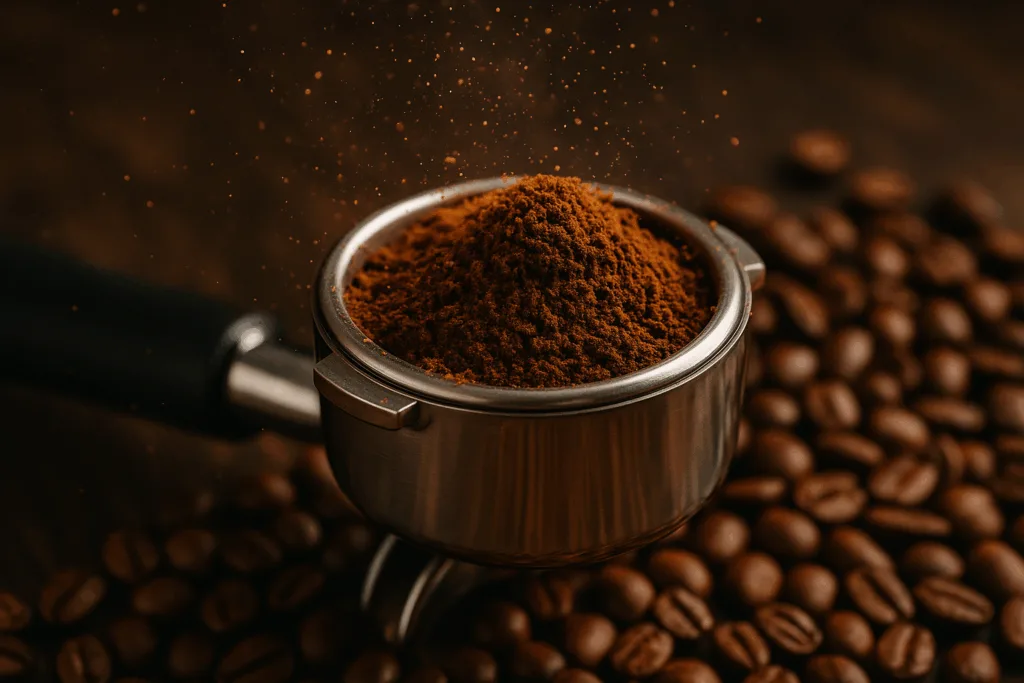
Breaking Down Espresso’s Aromatic Profile
Every great espresso tells a story through its aroma, and learning to “read” these scents will transform how you approach your home brewing. I like to think of espresso aroma as having three distinct phases, each offering clues about the quality and characteristics of your shot.
Phase 1: The Dry Aroma (Pre-Brewing)
This is what you smell when you first grind your beans or open a fresh bag. Quality espresso beans should have:
Positive indicators:
- Rich, deep coffee scents
- Subtle fruity or floral notes (depending on origin)
- Chocolate or caramel undertones
- Clean, bright aromatics
Red flags:
- Musty or stale odors
- Overly oily or rancid smells
- Absence of any distinct aroma
- Sharp, unpleasant acidic notes
Phase 2: The Wet Aroma (During Extraction)
As hot water meets your grounds, new aromatic compounds are born. This is where the magic happens—you should notice:
- Intensification of the dry aromas
- New complexity as heat unlocks different compounds
- Balance between roasted and origin characteristics
- Richness that makes your mouth water
Phase 3: The Cup Aroma (Post-Extraction)
Your finished espresso should maintain aromatic complexity even after extraction. The crema plays a crucial role here, acting like a protective blanket that traps and preserves those precious volatile compounds.
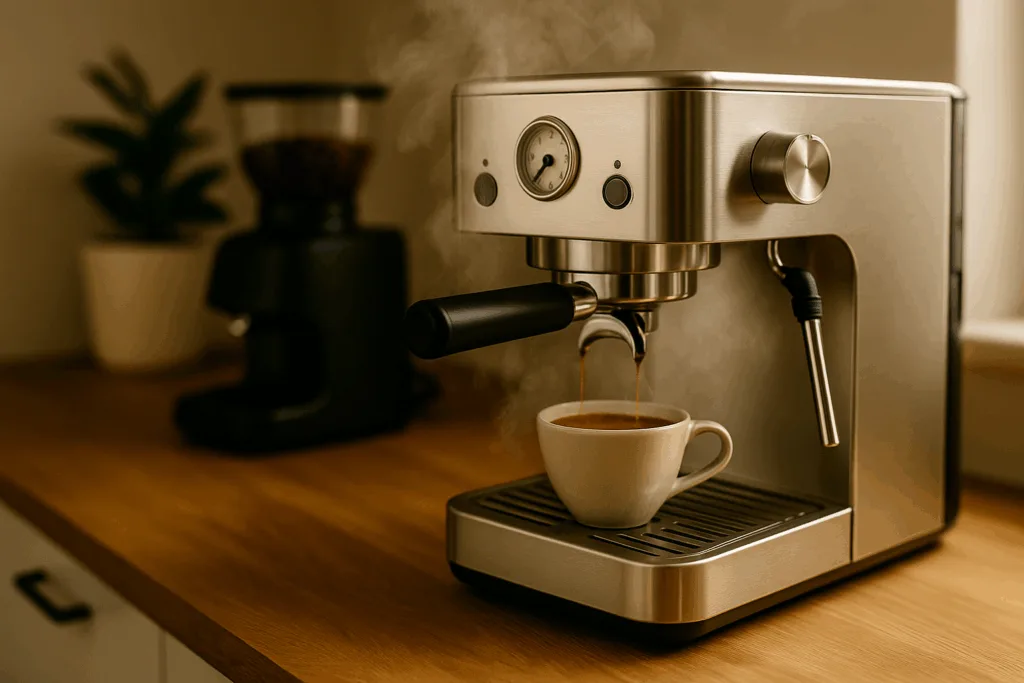
The Role of Crema in Espresso Aroma
Let’s talk about crema—that golden-brown foam that sits on top of a well-extracted espresso shot. While some coffee purists debate its importance for taste, there’s no arguing its crucial role in espresso aroma preservation.
What Crema Actually Does
Crema is essentially emulsified oils and gases created during the high-pressure extraction process. These oils are loaded with aromatic compounds, and the foam structure acts like tiny bubbles trapping and slowly releasing these scents. When you break through the crema with your spoon or take that first sip, you’re releasing a concentrated burst of aroma.
Pro tip: Before drinking your espresso, take a moment to gently stir the crema. This releases trapped aromatics and gives you a preview of the flavors you’re about to experience.
Signs of Good vs. Bad Crema
| Good Crema | Poor Crema |
|---|---|
| Golden-brown color with reddish highlights | Very light or very dark |
| Thick, persistent foam (lasts 2-3 minutes) | Thin, disappears quickly |
| Small, uniform bubbles | Large, uneven bubbles |
| Rich, complex aroma when stirred | Little to no aroma |
Understanding these visual and aromatic cues helps you dial in your espresso technique. If you’re looking to upgrade your setup, check out our comprehensive equipment comparisons to find gear that consistently produces quality crema.
How Brewing Variables Impact Espresso Aroma
Here’s where the art meets science—every decision you make during brewing affects your espresso aroma. After years of experimenting (and plenty of less-than-perfect shots), I’ve learned that small adjustments can create dramatic changes in aromatic profile.
Grind Size: The Foundation of Aroma
Finer grinds expose more surface area to hot water, releasing more aromatic compounds quickly. However, go too fine and you risk over-extraction, which can create harsh, unpleasant aromas.
Coarser grinds preserve more delicate aromatic compounds but may under-extract, leaving you with weak, sour-smelling espresso.
The sweet spot? A grind that feels like fine sand between your fingers—fine enough for proper extraction, coarse enough to avoid bitterness.
Water Temperature: The Aroma Activator 🌡️
Water temperature dramatically affects which aromatic compounds are extracted:
- 195-205°F (90-96°C): Optimal range for balanced aroma extraction
- Too hot (>205°F): Burns delicate compounds, creates harsh aromas
- Too cool (<195°F): Under-extracts, resulting in flat, sour-smelling shots
Extraction Time: Timing is Everything
A proper espresso extraction (25-30 seconds for a double shot) allows for:
- Initial bloom (0-10 seconds): Aromatic gases escape
- Main extraction (10-25 seconds): Complex compounds develop
- Final phase (25-30 seconds): Final aromatic notes emerge
Going beyond 30 seconds often leads to over-extraction, where bitter compounds dominate the aroma profile.

Bean Selection and Storage for Maximum Aroma
The journey to incredible espresso aroma starts long before you fire up your machine—it begins with choosing and storing the right beans. I’ve learned this lesson the hard way, after wondering why my expensive espresso machine wasn’t producing café-quality results with mediocre, stale beans.
Choosing Aromatic Beans
Roast date matters more than anything else. Look for beans roasted within 2-4 weeks of your purchase date. Here’s why:
- Week 1: Beans are still degassing—too fresh for optimal extraction
- Weeks 2-4: Peak aroma and flavor development
- Beyond 4 weeks: Aromatic compounds start breaking down rapidly
Origin Characteristics and Aroma
Different coffee origins bring distinct aromatic profiles:
Ethiopian beans often showcase:
- Bright, floral aromatics
- Fruity, wine-like scents
- Complex, tea-like qualities
Colombian beans typically offer:
- Balanced, nutty aromas
- Chocolate and caramel notes
- Clean, bright characteristics
Brazilian beans commonly feature:
- Rich, earthy aromatics
- Nutty, chocolatey scents
- Full-bodied, robust profiles
Storage: Preserving Precious Aromatics
Proper storage is crucial for maintaining espresso aroma. Those volatile compounds that create amazing scents are also the first to disappear when exposed to:
- Light ☀️
- Air 💨
- Heat 🔥
- Moisture 💧
Best practices:
- Store beans in an airtight container
- Keep in a cool, dark place
- Don’t refrigerate or freeze (moisture is the enemy)
- Buy smaller quantities more frequently
- Grind just before brewing
For more detailed guidance on bean selection, explore our product recommendations where we break down the best beans for home espresso brewing.
Training Your Nose: Developing Aroma Sensitivity
One of the most rewarding aspects of diving deep into espresso aroma is developing your sensory skills. Like wine tasting or perfume appreciation, coffee aroma evaluation is a skill that improves with practice and attention.
The Daily Aroma Ritual
I’ve developed a simple routine that’s dramatically improved my ability to detect and appreciate espresso aromatics:
Morning aroma check:
- Smell your beans before grinding
- Inhale deeply after grinding (but before brewing)
- Evaluate the wet aroma during extraction
- Assess the cup aroma before drinking
- Notice changes as the espresso cools
Building Your Aroma Vocabulary
Having words to describe what you’re smelling helps train your brain to notice subtle differences. Here are some common espresso aroma descriptors:
Positive aromatics:
- Floral: jasmine, rose, lavender
- Fruity: berry, citrus, stone fruit
- Nutty: almond, hazelnut, walnut
- Sweet: chocolate, caramel, vanilla
- Spicy: cinnamon, clove, black pepper
Negative aromatics:
- Musty: old, stale, basement-like
- Sour: vinegar, fermented, sharp
- Bitter: burnt, ashy, harsh
- Flat: no distinct aroma, lifeless
The Comparative Method
One of the best ways to develop your palate is through side-by-side comparisons. Try brewing the same beans with different variables:
- Different grind sizes
- Various water temperatures
- Multiple extraction times
- Fresh vs. older beans
This comparative approach quickly teaches you how each variable affects aromatic development.
Want to refine your tasting skills further? Check out the Specialty Coffee Association’s Flavor Wheel — the global standard for identifying espresso flavor notes.

Common Aroma Problems and Solutions
Even experienced home baristas encounter aromatic challenges. Let me share some common espresso aroma issues I’ve faced and the solutions that actually work.
Problem 1: Weak or Absent Aroma
Possible causes:
- Stale beans (roasted more than 4 weeks ago)
- Grind too coarse
- Water temperature too low
- Under-extraction
Solutions:
✅ Buy fresher beans from a local roaster
✅ Adjust grind finer gradually
✅ Check water temperature (should be 195-205°F)
✅ Increase extraction time slightly
Problem 2: Harsh, Unpleasant Aromas
Possible causes:
- Over-extraction
- Water too hot
- Grind too fine
- Poor quality beans
Solutions:
✅ Coarsen your grind slightly
✅ Lower water temperature by 5-10°F
✅ Reduce extraction time
✅ Upgrade bean quality
Problem 3: Inconsistent Aromatics
Possible causes:
- Inconsistent grinding
- Variable tamping pressure
- Fluctuating water temperature
- Uneven bean storage
Solutions:
✅ Invest in a quality grinder with consistent particle size
✅ Practice consistent tamping technique
✅ Use a machine with stable temperature
✅ Improve storage methods
The Psychology of Espresso Aroma
There’s something almost magical about how espresso aroma affects our psychology and expectations. Understanding this connection can actually improve your espresso experience and help you appreciate the craft on a deeper level.
Aroma and Memory Connection 🧠
Our olfactory system is directly connected to the brain’s limbic system, which processes emotions and memories. This is why certain espresso aromas can instantly:
- Transport you to specific places
- Trigger emotional responses
- Create anticipation and excitement
- Influence taste perception
The Expectation Effect
Research shows that pleasant aromas actually enhance our perception of taste. When your espresso smells incredible, your brain is already primed to experience better flavors. This isn’t just psychological trickery—it’s a real physiological response that affects taste perception.
Practical application: Take time to really appreciate your espresso’s aroma before drinking. This moment of mindful appreciation enhances the entire experience.
Cultural Aromatics
Different cultures have varying associations with coffee aromatics. Understanding these can help you appreciate diverse espresso styles:
- Italian tradition: Values rich, roasted aromatics with minimal origin character
- Third-wave movement: Celebrates bright, origin-specific aromatic profiles
- Traditional Middle Eastern: Appreciates spiced, cardamom-influenced aromatics
Learning about these different approaches through resources like our comprehensive guides can broaden your aromatic appreciation.
Advanced Techniques for Aroma Enhancement
Once you’ve mastered the basics of espresso aroma, there are some advanced techniques that can take your home brewing to the next level. These methods require a bit more attention and practice, but the aromatic rewards are incredible.
The Bloom Technique
Pre-infusion or “blooming” involves wetting your coffee grounds with a small amount of water before full extraction. This technique:
- Allows trapped CO₂ to escape
- Enables more even water penetration
- Enhances aromatic compound release
- Creates more complex aroma development
How to bloom:
- Start your extraction normally
- Stop after 3-5 seconds (just wet the grounds)
- Wait 5-10 seconds
- Continue with normal extraction
Temperature Profiling for Aromatics
If your espresso machine allows temperature control, try temperature profiling:
- Start cooler (190-195°F) to preserve delicate aromatics
- Gradually increase to 200-205°F for full extraction
- Finish slightly cooler to avoid harsh compounds
The Stirring Method
After extraction, gently stir your crema in a specific pattern:
- One gentle clockwise stir
- Wait 10 seconds
- One gentle counter-clockwise stir
- Smell immediately
This technique releases trapped aromatics in waves, creating a more complex olfactory experience.
For a scientific perspective on how volatile compounds form during espresso extraction, explore this detailed study by ScienceDirect’s Coffee Aroma Research.
Building Your Home Aroma Laboratory
Creating the perfect environment for appreciating espresso aroma doesn’t require a professional cupping lab—just some thoughtful setup and attention to detail.
Essential Equipment for Aroma Appreciation
Must-haves:
- Quality grinder with consistent particle size
- Espresso machine with temperature stability
- Fresh, quality beans from reputable sources
- Proper storage containers (airtight, opaque)
Nice-to-haves:
- Cupping spoons for proper aroma evaluation
- Multiple small cups for comparison tastings
- Notebook for tracking aroma observations
- Scale for consistent dosing
Creating the Right Environment
Your tasting environment affects aroma perception:
- Minimize competing scents (no air fresheners, strong foods)
- Ensure good ventilation without drafts
- Use neutral lighting (natural light is best)
- Maintain comfortable temperature (68-72°F is ideal)
The Home Cupping Setup
Set up regular cupping sessions to develop your aroma skills:
- Prepare 3-4 different espressos (different beans or brewing variables)
- Smell each at different stages (dry, wet, cup aroma)
- Take notes on aromatic differences
- Compare and contrast your observations
- Track improvements over time
For equipment recommendations and detailed reviews, check out our comparison tools to find the best gear for your aromatic journey.
The Future of Espresso Aroma Science
The world of espresso aroma research is constantly evolving, with new discoveries helping us understand and improve the aromatic experience. As we move through 2025, several exciting developments are shaping how we think about coffee aromatics.
Emerging Research Areas
Genetic aromatic mapping: Scientists are identifying specific genetic markers in coffee plants that influence aromatic compound development. This research could lead to new varieties specifically bred for enhanced aroma profiles.
Fermentation innovation: New fermentation techniques are being developed to enhance and modify aromatic compounds during coffee processing, creating entirely new flavor and aroma profiles.
Precision brewing technology: Advanced espresso machines with precise control over every brewing variable are making it easier for home baristas to optimize aromatic extraction.
Technology and Aroma
Smart brewing devices are incorporating aroma-focused features:
- Sensors that detect aromatic compound release
- Automated brewing profiles optimized for aroma
- Apps that help track and improve aromatic consistency
Aroma preservation technology is improving:
- Better packaging that preserves volatile compounds longer
- Storage solutions that maintain optimal aromatic conditions
- Grinding technology that minimizes aroma loss
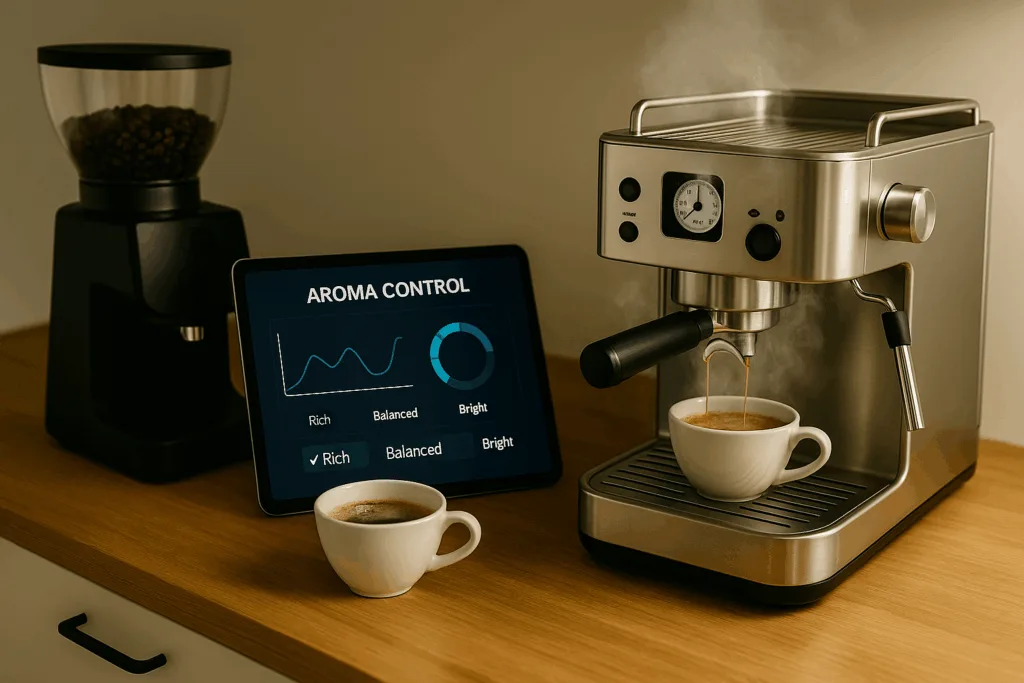
Conclusion: Embracing the Aromatic Journey
Understanding espresso aroma transforms your daily coffee ritual from a simple caffeine delivery system into a rich sensory experience. The science behind smell and taste isn’t just fascinating—it’s practical knowledge that directly improves every shot you pull.
Remember, developing your aromatic appreciation is a journey, not a destination. Every morning offers a new opportunity to notice something different, to refine your technique, or to discover a new aromatic note you’d never detected before.
Your Next Steps to Aromatic Excellence
Start immediately:
- Pay attention to aroma at every stage of your brewing process
- Take notes on what you smell and how it correlates with taste
- Experiment with one variable at a time to understand its aromatic impact
This week:
- Source fresh beans from a local roaster (roasted within 2 weeks)
- Improve your storage setup to preserve aromatics
- Practice the bloom technique to enhance aroma release
This month:
- Set up regular cupping sessions to develop your palate
- Try beans from different origins to expand your aromatic vocabulary
- Consider upgrading equipment that impacts aroma (grinder, storage, machine)
The beautiful thing about focusing on espresso aroma is that it makes you more present and mindful during your coffee routine. Instead of rushing through your morning shot, you’ll find yourself slowing down, appreciating the complexity, and truly savoring the experience.
At Espresso Insider, we believe that great espresso should be accessible to everyone, not just café professionals. Understanding aroma is one of the most powerful tools in your home barista toolkit—it costs nothing to develop but adds immeasurable value to every cup.
Whether you’re just starting your espresso journey or you’re a seasoned home barista looking to deepen your appreciation, remember that every expert was once a beginner. The path to aromatic mastery is paved with countless morning shots, each one teaching you something new about the incredible complexity hidden in those small, dark beans.
So tomorrow morning, before you take that first sip, pause. Breathe in deeply. Let the espresso aroma tell its story. Your taste buds—and your daily ritual—will thank you for it.
FAQs – Espresso Aroma
What causes the rich aroma in espresso?
Espresso aroma develops when hot water extracts volatile compounds from freshly ground coffee. These include oils, caramelized sugars, and organic acids that release instantly upon brewing.
How can I enhance the aroma of my espresso at home?
Use freshly roasted beans, grind right before brewing, and maintain correct brew temperature (195–205°F). Also, cleaning your espresso machine regularly prevents off-flavors that mask aroma.
Does crema affect espresso flavor and aroma?
Yes. Crema acts as a flavor cap, trapping volatile aromatic compounds. A dense, golden crema indicates balanced extraction and enhances both aroma and mouthfeel.
Why do espresso aromas change over time?
Aromas evolve as volatile compounds dissipate. Within seconds of extraction, lighter notes like citrus fade while deeper caramel and cocoa tones linger.
How do professionals evaluate espresso aroma?
Baristas and Q-graders assess aroma by sniffing freshly extracted espresso and noting key profiles such as nutty, floral, spicy, or chocolatey, following protocols similar to coffee cupping.
What’s the role of technology in espresso aroma optimization?
Modern espresso machines use PID temperature control, pressure profiling, and smart sensors to fine-tune extraction—maximizing aroma consistency and flavor precision shot after shot.


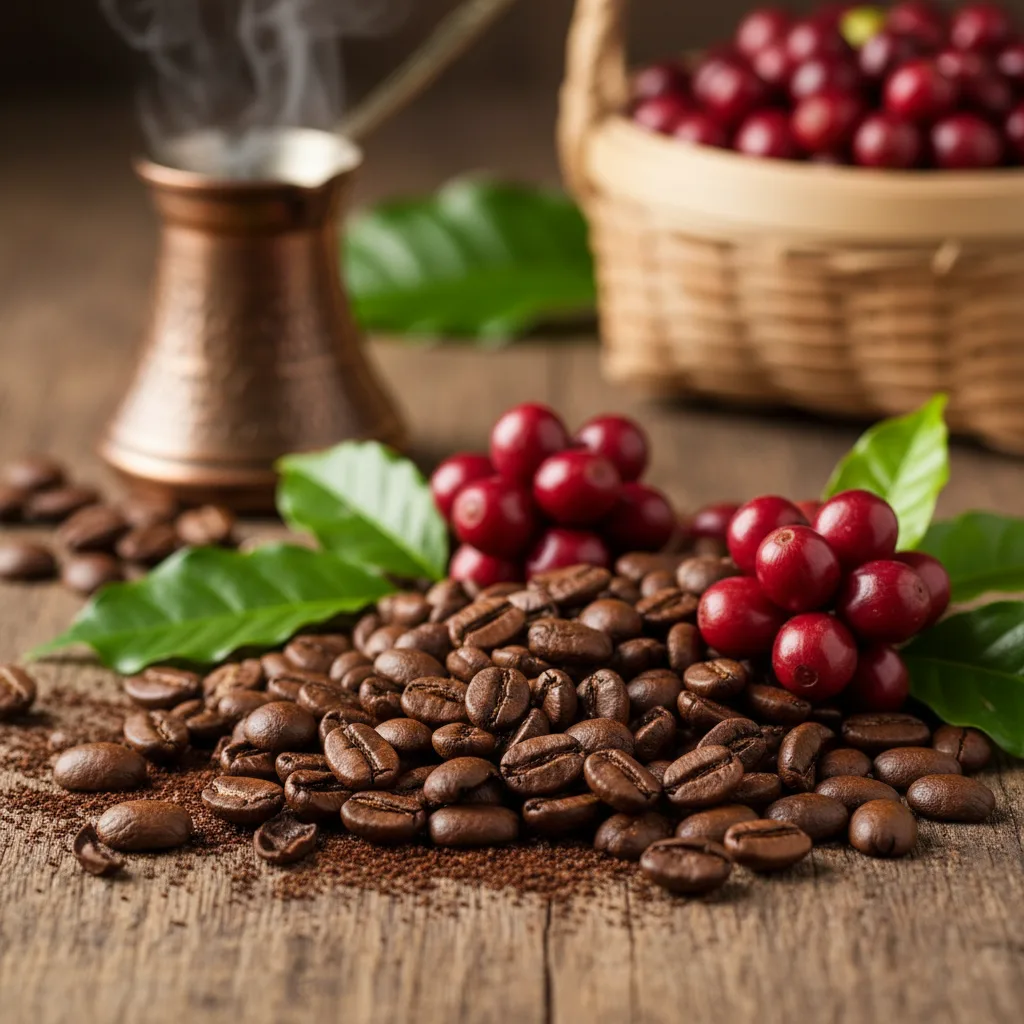
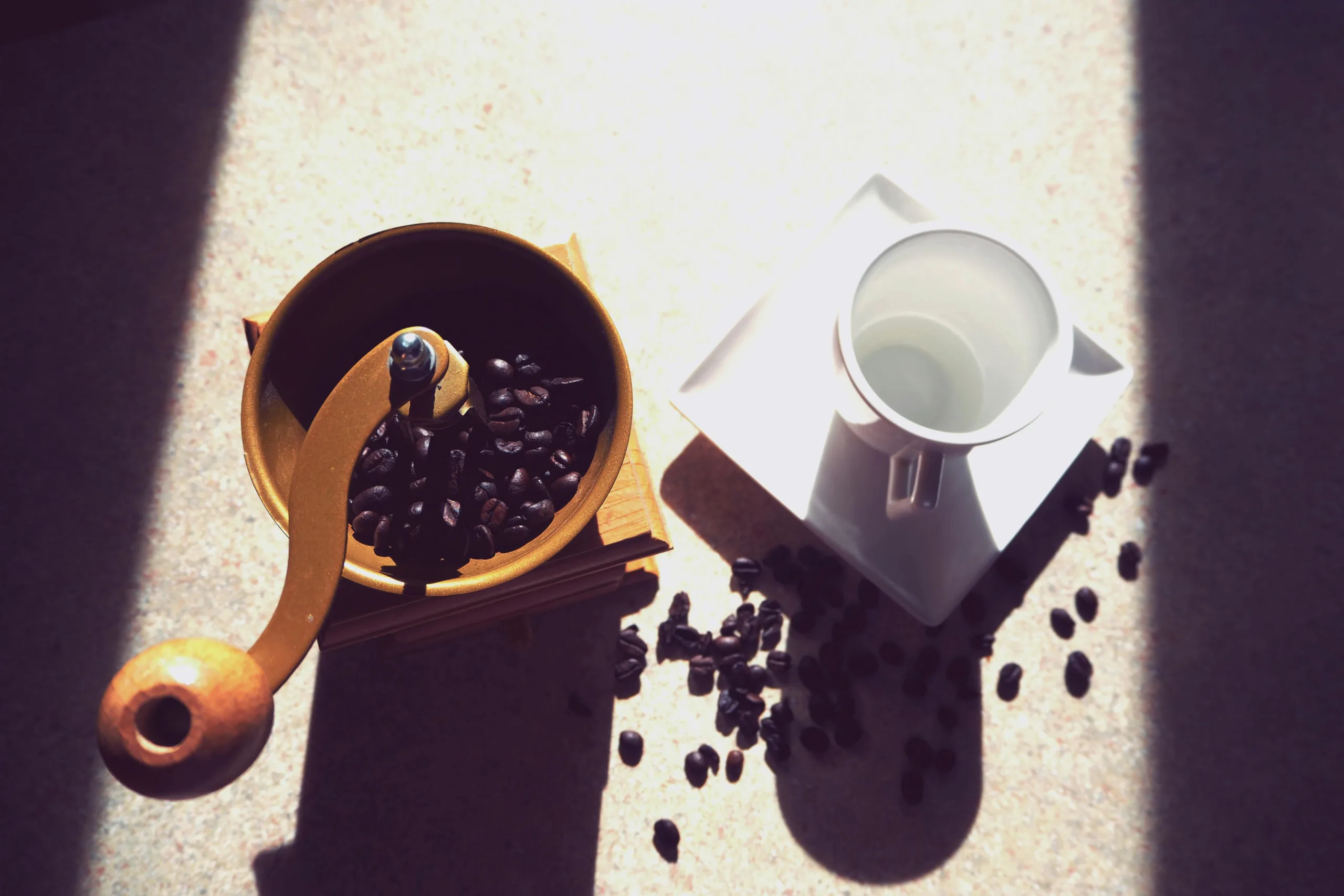
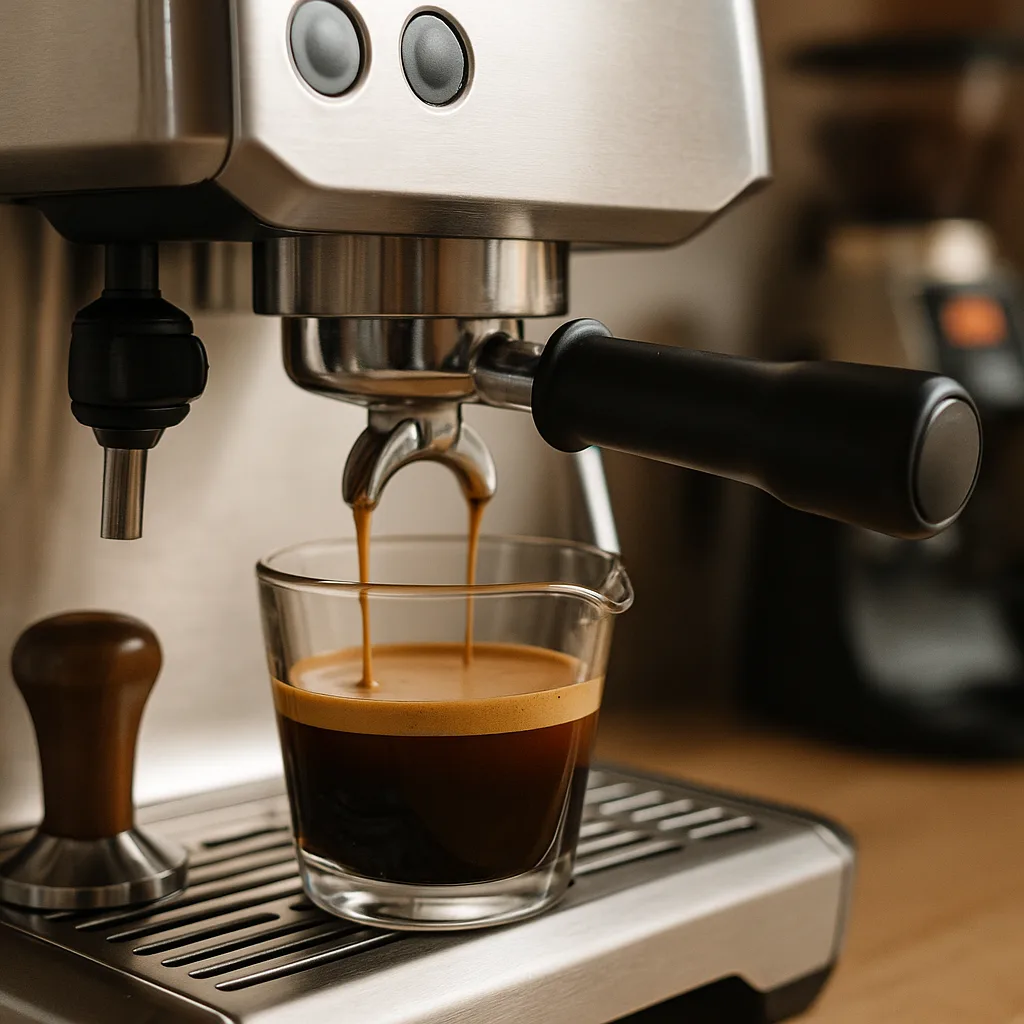
Leave a Reply
You must be logged in to post a comment.